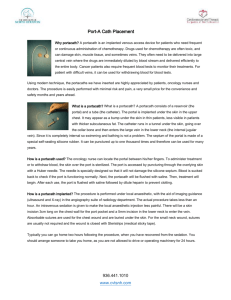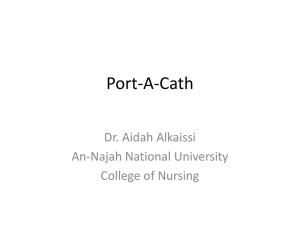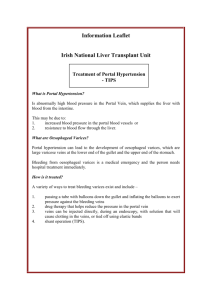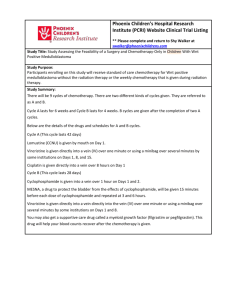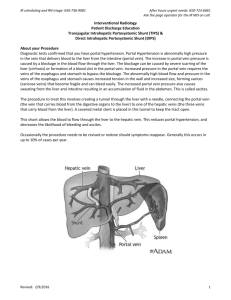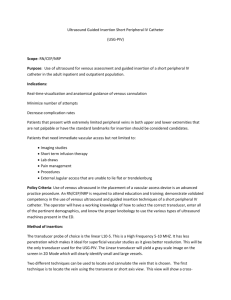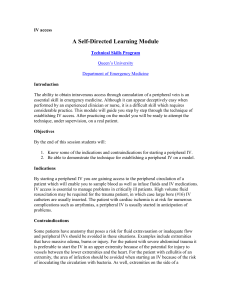Portacath Fact Sheet
advertisement
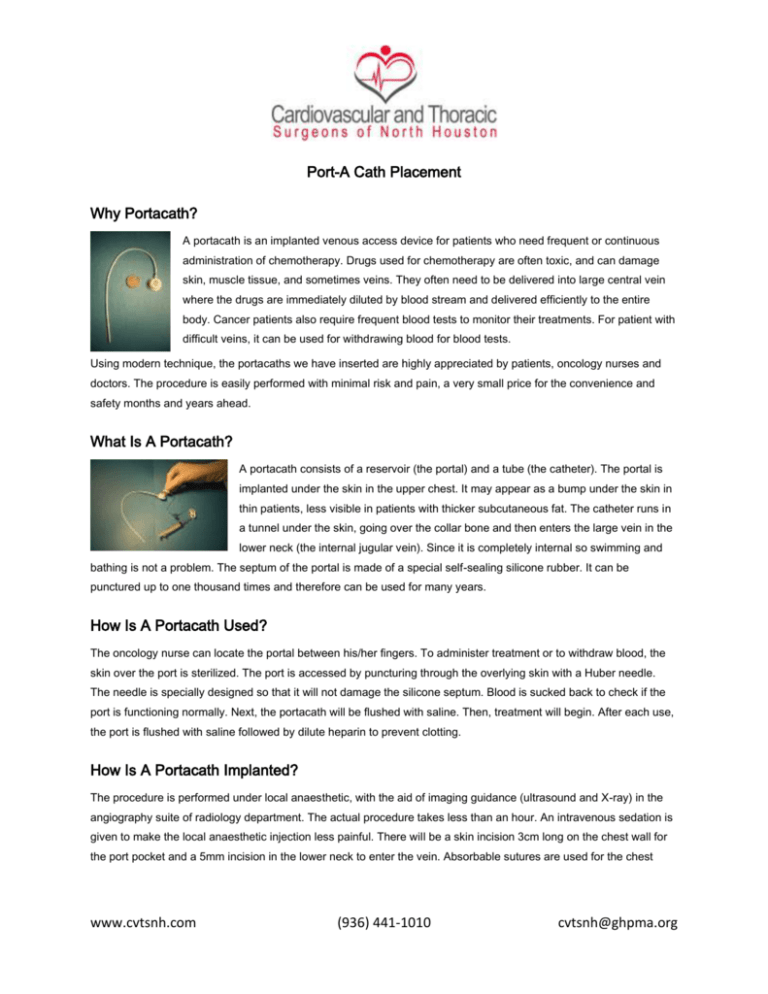
Port-A Cath Placement Why Portacath? A portacath is an implanted venous access device for patients who need frequent or continuous administration of chemotherapy. Drugs used for chemotherapy are often toxic, and can damage skin, muscle tissue, and sometimes veins. They often need to be delivered into large central vein where the drugs are immediately diluted by blood stream and delivered efficiently to the entire body. Cancer patients also require frequent blood tests to monitor their treatments. For patient with difficult veins, it can be used for withdrawing blood for blood tests. Using modern technique, the portacaths we have inserted are highly appreciated by patients, oncology nurses and doctors. The procedure is easily performed with minimal risk and pain, a very small price for the convenience and safety months and years ahead. What Is A Portacath? A portacath consists of a reservoir (the portal) and a tube (the catheter). The portal is implanted under the skin in the upper chest. It may appear as a bump under the skin in thin patients, less visible in patients with thicker subcutaneous fat. The catheter runs in a tunnel under the skin, going over the collar bone and then enters the large vein in the lower neck (the internal jugular vein). Since it is completely internal so swimming and bathing is not a problem. The septum of the portal is made of a special self-sealing silicone rubber. It can be punctured up to one thousand times and therefore can be used for many years. How Is A Portacath Used? The oncology nurse can locate the portal between his/her fingers. To administer treatment or to withdraw blood, the skin over the port is sterilized. The port is accessed by puncturing through the overlying skin with a Huber needle. The needle is specially designed so that it will not damage the silicone septum. Blood is sucked back to check if the port is functioning normally. Next, the portacath will be flushed with saline. Then, treatment will begin. After each use, the port is flushed with saline followed by dilute heparin to prevent clotting. How Is A Portacath Implanted? The procedure is performed under local anaesthetic, with the aid of imaging guidance (ultrasound and X-ray) in the angiography suite of radiology department. The actual procedure takes less than an hour. An intravenous sedation is given to make the local anaesthetic injection less painful. There will be a skin incision 3cm long on the chest wall for the port pocket and a 5mm incision in the lower neck to enter the vein. Absorbable sutures are used for the chest www.cvtsnh.com (936) 441-1010 cvtsnh@ghpma.org wound and are buried under the skin. For the small neck wound, sutures are usually not required and the wound is closed with Steristrips (medical sticky tape). Typically you can go home two hours following the procedure, when you have recovered from the sedation. You should arrange someone to take you home, as you are not allowed to drive or operating machinery for 24 hours. What Preparation Is Required? You need to avoid solid food from midnight. Clear fluid and medications are allowed up to the time of procedure. If your are on aspirin, Warfarin or plavix, check with your own doctor if these can be stopped for 5 days. You can resume these medications the day after insertion. Insertion is best delayed if you have active infection. What Aftercare is Required? For 5 days you need to keep the wound clean and dry, and to avoid strenuous activities of the upper limb and chest wall. The oncology centre will access the port and change the dressing for you. If you will commence chemotherapy within the next two days, please let us know so that we will leave a Huber needle catheter on the portal ready for immediate access; the onocology nurse will apply new dressing when you finish the chemotherapy session. Any issues associated with the wound healing, please contact us. When the portacaths are no longer used, it needs to be flushed with saline and locked with heparinised saline once per month to keep it patent. If the portacath is no longer required, it can be removed by us. The procedure is performed under sedation and local anaesthetic, similar to insertion. Why The Right Internal Jugular Vein Is Preferred? The vein is large and superficial, easily visualized with ultrasound. It runs a straight course towards the right atrium. This vein has the lowest risk of complication associated with insertion and subsequent usage. The left internal jugular vein is the second best. Why Is A Portacath Implanted By Interventional Radiologists? Application of modern imaging technique has made portacath insertion much safer and quicker. The patency of the vein is checked with ultrasound. The best site for puncture and the course of the tunnel are selected using ultrasound, avoiding other veins and arteries in the area. The actual puncture is performed under real-time ultrasound guidance, thus avoiding injury to the adjacent artery. Once the vein is punctured, a guide wire is inserted and its position is checked under fluoroscopy (X-ray). The length of catheter required is measured with fluoroscopy. Finally the function of the portacath is checked by injection X-ray dye. www.cvtsnh.com (936) 441-1010 cvtsnh@ghpma.org What Are The Risks Of Portacath Insertion? With modern imaging guidance, the risk of the procedure itself is minimal. There is theoretical risks of blood vessel injury, wound infection, bruising and haematoma formation, and the very remote chance of allergic reaction to the Xray dye and drugs used during the procedure. What Are The Potential Problems With Port Usage? Months after insertion, rarely the catheter can be blocked with clots and tissue growth (fibrin sheath). This can be rectified with clot dissolving agents (urokinase). Also very rarely the portacath can be infected. This can be recognized by skin changes overlying the portal. Skin changes can also be due to chemical irritation if chemotherapy agents if the Huber needle tip is not completely within the portal. Sometimes the port is thought to be infected when you show signs of severe infection yet no other source can be found. An infected portacath need to be removed. www.cvtsnh.com (936) 441-1010 cvtsnh@ghpma.org
